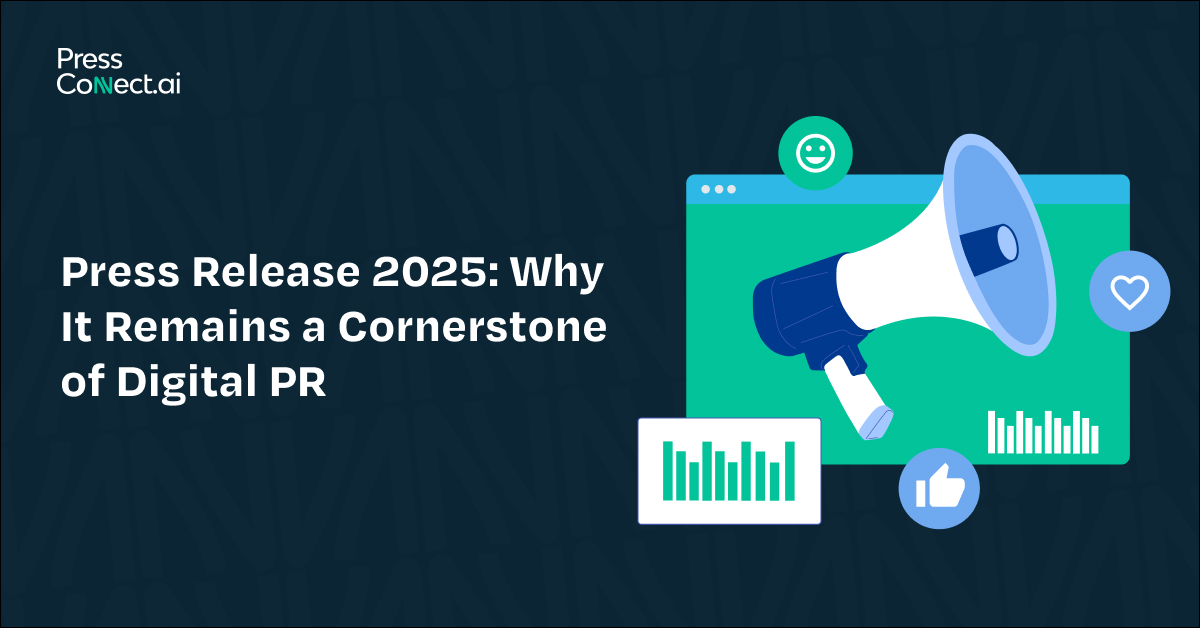Local vs. Global Press Release: Choosing the Most Effective PR Strategy
Not all press releases are created equal—some make waves in local communities, while others capture global headlines. But which approach is right for your business?
A well-crafted press release is a powerful tool for boosting brand awareness, building credibility, and reaching the right audience. However, choosing between a local and global PR strategy can make all the difference in how your message is received. Do you want to establish strong community ties and dominate regional markets, or are you aiming to position your brand on the world stage?
In this blog, we’ll break down the key differences between local and global press releases, explore their benefits and drawbacks, and help you decide which strategy aligns best with your business goals. Whether you’re a startup, a growing brand, or an established enterprise, understanding the correct PR approach can be a game-changer. Let’s dive in!
Understanding Local and Global Press Releases
To craft an effective PR strategy, it’s essential to understand the fundamental differences between local and global press releases. While both serve the purpose of disseminating important news, their scope, target audience, and impact vary significantly. Below, we break down what each entails and when to use them.
What is a Local Press Release?
A local press release is a targeted communication aimed at regional audiences, typically distributed through local newspapers, community websites, radio stations, and TV channels. These press releases focus on news that is relevant to a specific city, state, or region and are designed to build brand recognition within a particular locality.
Target Audience:
- Local media outlets and journalists
- Community members and potential customers in a specific region
- Local business owners, influencers, and stakeholders
Common Use Cases:
- Store Openings & Business Expansions – Announcing a new retail location, office branch, or business expansion in a specific area.
- Local Events & Sponsorships – Promoting community events, charity initiatives, or sponsorships that engage a local audience.
- Product Launches in Regional Markets – Introducing a new product or service that is available in a particular city or region.
- Partnerships & Collaborations – Highlighting collaborations with local businesses, influencers, or organizations
- Awards & Recognitions – Showcasing achievements that boost credibility within the local market.
Why Choose a Local Press Release?
- Stronger Community Engagement: Local press releases help businesses build trust and credibility within their immediate market.
- Higher Chances of Media Coverage: Local journalists are likely to pick up news that directly impacts their audience.
- Cost-Effective: Local PR campaigns are typically more affordable than global campaigns, making them ideal for small to mid-sized businesses.
What is a Global Press Release?
A global press release is designed for a broader audience, reaching international media, investors, and global stakeholders. These releases are distributed via major newswires, online media platforms, and multinational publications, ensuring that the message reaches multiple markets worldwide.
Target Audience:
- International media outlets, journalists, and publications
- Industry leaders, investors, and corporate stakeholders
- A global customer base spanning multiple regions and cultures
Common Use Cases:
- Product & Service Launches on a Global Scale – Announcing new products that are available internationally.
- Corporate Expansions & Mergers – Communicating a company’s expansion into new markets, mergers, or acquisitions.
- Major Industry Announcements – Sharing groundbreaking innovations, technological advancements, or industry insights.
- Financial Reports & Investor Updates – Distributing earnings reports, funding announcements, and financial milestones to global stakeholders.
- Brand Positioning & Thought Leadership – Establishing a company as an industry leader through global media coverage.
Why Choose a Global Press Release?
- Wider Reach & Brand Awareness: Global press releases amplify a company’s visibility, making it a recognized name in multiple markets.
- Attracts Investors & Business Partnerships: Large-scale PR campaigns help position a brand as a major player in the industry.
- Ideal for Multinational Businesses & Online Brands: Companies with an international presence benefit from broad exposure across different regions.
Local vs. Global: Which One is Right for You?
The choice between a local and global press release depends on your business goals, target audience, and the nature of your announcement. If you want to engage a specific community and drive local sales, a local press release is the way to go. However, if your objective is to gain international recognition and attract a global audience, a global press release will be more effective.
In many cases, businesses can combine both strategies for maximum impact—starting with a local press release to establish a strong foundation, then scaling up to a global level for broader outreach.
Pros and Cons of Local and Global Press Releases
Choosing between a local and global press release depends on various factors, including your business goals, target audience, and budget. While both approaches offer significant benefits, they also come with their challenges. Below, we’ll dive into the pros and cons of each strategy to help you determine the best PR approach for your needs.
Local Press Releases: Pros & Cons
|
Pros |
Cons |
|
Stronger Community Engagement – Builds trust and loyalty within a specific geographic area. |
Limited Reach – The impact is confined to a specific city or region, restricting brand visibility. |
|
Higher Chances of Media Coverage – Local journalists and news outlets are more likely to feature relevant regional stories. |
Less Impact on Industry Leadership – A local PR approach may not position a company as a global thought leader. |
|
More Cost-Effective – Less expensive compared to global press releases, making it ideal for small and medium-sized businesses. |
Limited Investor & Stakeholder Attention – Less likely to attract international investors or corporate partnerships. |
|
Better Audience Relevance – The message is highly relevant to the target audience, leading to better engagement. |
Pros and Cons of Global Press Releases
|
Pros |
Cons |
|
Expands Brand Awareness Internationally – Increases visibility across multiple markets, reaching a global audience. |
Higher Costs & Resource Demands – Requires a larger budget for global distribution, translations, and PR agency fees. |
|
Positions Company as an Industry Leader – Strengthens credibility and authority in the industry. |
Risk of Diluted Messaging – The message may not resonate equally across different cultural and linguistic groups. |
|
Attracts Investors, Partners, and Global Customers – Enhances appeal to international investors and potential business collaborators. |
Difficulty in Securing Media Coverage – Top-tier global publications receive thousands of press releases daily, making coverage more challenging to achieve. |
|
More Competitive in the Market – Helps businesses compete with established global brands. |
Potential Regulatory & Compliance Issues – Press releases must comply with various media laws and regulations across different countries. |
Key Factors to Consider When Choosing a PR Strategy
Choosing between a local and global press release requires careful evaluation of several critical factors. Your decision should align with your business goals, target audience, budget, and overall PR objectives. Below, we list the key factors you should consider when crafting an effective PR strategy.
1. Target Audience: Who Are You Trying to Reach?
Your PR strategy should be based on who you want to engage. A localized audience requires a regional approach, while an international audience needs a broader global reach.
- Local PR Strategy: Best for businesses targeting a specific geographic location, such as city residents, local customers, small business owners, or regional media.
- Global PR Strategy: Ideal for businesses looking to reach international markets, global consumers, investors, or multinational partners.
Example:
A restaurant chain launching a new branch in New York would benefit from a local press release, whereas a tech startup unveiling a new AI-powered tool would require global media coverage to attract international users and investors.
2. Business Goals: What Are You Trying to Achieve?
Your PR approach should align with your overall business objectives. Ask yourself:
- Are you looking to increase foot traffic in a local store? → Local PR
- Do you want to position your company as an industry leader? → Global PR
- Are you trying to attract local customers or international clients?
|
Business Goal |
Recommended PR Strategy |
|
Boosting local brand awareness |
Local PR |
|
Expanding to multiple countries |
Global PR |
|
Engaging a niche regional audience |
Local PR |
|
Attracting global investors & partners |
Global PR |
|
Announcing local sponsorships/events |
Local PR |
|
Launching a worldwide product/service |
Global PR |
3. Budget: What Can You Afford?
PR campaigns vary significantly in cost, and your budget will determine how far your press release can reach.
- Local PR Strategy: More affordable, as it targets fewer media outlets and requires less distribution and promotion.
- Global PR Strategy: Requires more significant investments for worldwide distribution, translation services, and partnerships with international media agencies.
Example:
A small business launching a single store location might find a local press release more cost-effective, whereas a tech company launching an app worldwide would need a global press release despite its higher costs.
4. Industry & Competition: Where Do You Stand?
Consider how competitive your industry is and whether your competitors are using local or global PR.
- Local PR Strategy: Ideal for local businesses, hospitality, real estate, and community-driven brands where competition is primarily regional.
- Global PR Strategy: Necessary for tech, finance, e-commerce, healthcare, and multinational industries where international visibility is crucial.
Example:
A local bakery expanding within a neighborhood can benefit from a local PR push, whereas a fintech startup launching a new digital banking solution would need global PR to compete internationally.
5. Newsworthiness: How Significant is Your Announcement?
Ask yourself whether your news has a local or global impact.
- Local PR: Suitable for store openings, local sponsorships, partnerships, awards, and community events.
- Global PR: Required for corporate expansions, mergers, international product launches, financial reports, and industry innovations.
Example:
- A fashion brand opening a new store in Paris → Local PR.
- A fashion brand debuting its collection at Paris Fashion Week → Global PR.
By carefully analyzing these factors, you can craft a PR strategy that aligns with your business objectives, budget, and target audience.
Partner with Press Connect for PR Success
Choosing the right PR strategy isn’t just about local vs. global—it’s about what aligns best with your business goals, target audience, and budget. A local press release builds strong community connections and regional credibility, while a global press release expands your reach, establishes industry authority, and attracts international opportunities. Choosing the right PR strategy isn’t just about local vs. global—it’s about what aligns best with your business goals, target audience, and budget. A local press release builds strong community connections and regional credibility, while a global press release expands your reach, establishes industry authority, and attracts international opportunities.






